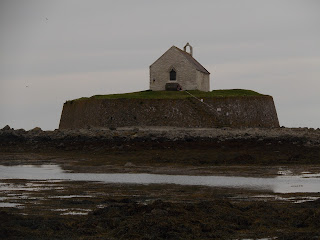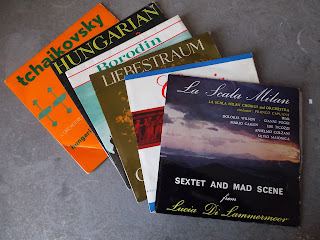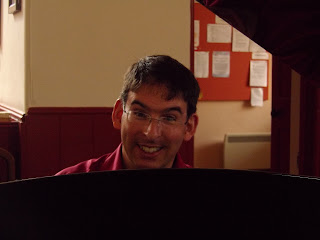When Anna Perry, clarinetist with the group, asked me to write the piece earlier this year, I remembered I had jotted down the clock's chimes when I was last in Rouen. At the time I was enjoying a glass of wine on the terrace just under the clock and when the chimes sounded I was intrigued by the way they outlined a key without ever sounding the actual tonic (keynote). I jotted them down on the other side of a receipt for the wine I was drinking and only came back to it earlier this year when I was thinking about the trio.
The first performances were given at Ledbury's Market Theatre (a very nice venue for young chamber groups) on Saturday and then at Cardiff's St Teilo's Church this afternoon by clarinetist Anna Perry, violinist David Grubb and pianists Jess Ryan-Phillips.

Borders Trio are a very enterprising group and five of the seven pieces in their concert were written especially for them. These included some wonderfully inventive and varied works from Alison Doubleday, Karim Bedda, Richard Jackson and Rosemary Kempson. The final result is a short four-minute piece extending the chimes into a longer melodic line. The trio have a number of extended effects to play: Anna made her debut playing claves last night, David has several passages on the other side of the violin bridge and Jess has some inside-the-piano work to do (Alas, we only had an electric instrument, but Jess worked miracles...)
.
It's a long time since I wrote the chimes down, so I hope that they are an accurate representation of what I heard on that August day back in 2002 ...






































